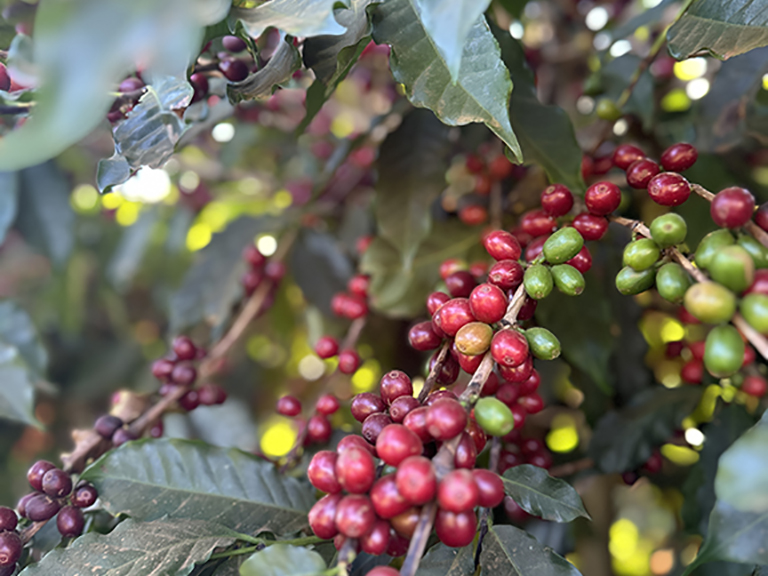 This summer, we visited Brazil for the second time to meet with farmers and coffee producers, study the variety of coffee types, select interesting lots, and, of course, bring back samples for our clients. Over 14 days, our team, represented by a Q-grader, visited 2 states, 7 cities, and 10 farms of different producers.
This summer, we visited Brazil for the second time to meet with farmers and coffee producers, study the variety of coffee types, select interesting lots, and, of course, bring back samples for our clients. Over 14 days, our team, represented by a Q-grader, visited 2 states, 7 cities, and 10 farms of different producers.
Details about each visit:
We started our immersion into the world of Brazilian coffee by meeting with our supplier, Rauscher Commodities Trading, who gave us a tour of the COCAPIL cooperative, located in the capital of Brazilian Specialty coffee, Ibiraci (Minas Gerais). The climate, environment, and altitude of the region are ideal for coffee production. We visited warehouses, the Boa Esperança farm, participated in loading our own container, and even harvested the new coffee crop ourselves. We cupped more than 15 varieties of commercial and Specialty coffees. The average score for Specialty coffees was 85+, and for commercial coffees, it was 82+, fully meeting our expectations.
Next on our itinerary was a meeting with Carmo Coffees, a well-known player in the world of Specialty coffee. The company's main idea is operational transparency and treating farmers as partners. We visited several Carmo Coffee farms, where varieties such as Geisha, Yellow/Red Bourbon, Pacamara, Starmaya, Eugenoides, and Laurina are grown. The company has been working for 8 years on a project to make Geisha more accessible to the consumer market. After walking around the hills of Carmo Coffees farms, we went to a cupping session where we tried more than 20 samples and selected 3 key and very interesting positions.
The days with Carmo Coffees flew by lightning fast, and soon we were in a new city, Pinhal (Minas Gerais), visiting our supplier Falcafe. Interesting fact, this region is actively represented by a large number of microlots and is historically one of the oldest coffee-producing regions in Brazil. Over 3 days, we visited several farms, each unique in its own way. For example, the organic farm Monte Verde produces organically pure coffee using only natural fertilizers and coffee tree processing methods. It's worth noting that before switching to organic care, they produced up to 3,000 bags of coffee per year. Now, this figure is only 500 bags, but they produce higher quality coffee with smaller volumes. At the Santa Isabel farm, where more than 40 variations of different varieties grow, fertilizers are made from coffee berry leftovers. And, of course, there was another cupping session.
Our trip concluded with a visit to the holdings of Capricornio Coffee. As an exporter, the company has been around since 2015 and is part of the ECOM group of companies. A highlight was visiting Fazenda California, a farm with over 100 years of history. It is unique because it cultivates various bacteria to fertilize coffee trees. Currently, the farm employs more than 100 people and produces over 5,000 bags of coffee per year. After visiting the farm, we were invited to another cupping session. The distinctive feature of Capricornio Coffees’ range is the classification of coffees into collections, from basic to microlots.
Our time in Brazil was vibrant, eventful, and educational. We gained extensive knowledge about the growing regions, coffee varieties, processing methods, and organoleptics. We brought back a suitcase full of samples and pleasant memories.